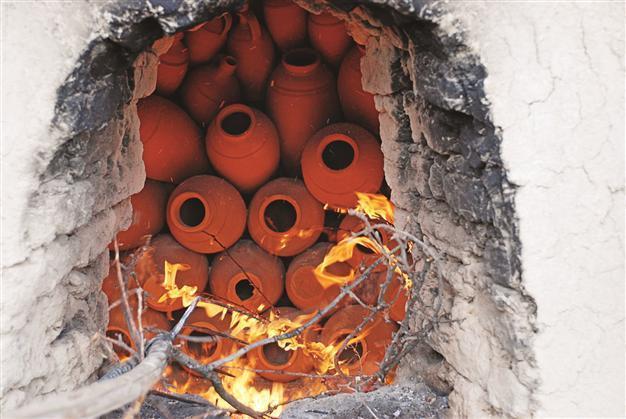Revealing the mysteries of Urartian pottery
ISTANBUL
 A research assistant at the Department of Archaeology in the Faculty of Letters at İzmir’s Aegean University has conducted studies on the reproduction of ancient Urartian red polished pottery, a kind of Urartian ceramic that looked like metallic potteries and were distinctive in color, surface treatment and firing.
A research assistant at the Department of Archaeology in the Faculty of Letters at İzmir’s Aegean University has conducted studies on the reproduction of ancient Urartian red polished pottery, a kind of Urartian ceramic that looked like metallic potteries and were distinctive in color, surface treatment and firing. To learn about the production chain of Urartian pottery, Atilla Batmaz carries out his studies on an experimental scale in the eastern province of Van’s Bardakçı village.
“In 2014 we began experiments about how Urartian red polished pottery might have been made together with a potter, Osman Eşme, in the Bardakçı village, a place famous for pottery making,” he said. “As our knowledge of the technology and production of this type of pottery was limited, we decided to make an experimental archaeology study. We suppose that the local clay beds from which we obtained clay were likely to have been used in the Urartian period as well. After we have made the clay ready to be treated, we will try to shape it into the most common shapes of Urartu, such as trefoil jugs, goblets, bowls and plates, as in the ancient period. We will continue the studies on an experimental scale in the Bardakçı Village of Van regarding how the production chain of the Urartian pottery was. This year we are concentrating on surface treatments, such as slip and polish, and on its firing. For the time being, we are performing firing in a mud and domed kiln which is similar to that used in the ancient period,” said Batmaz.
Stating these studies might be an important stage in terms of fully clarifying the production chain of Urartian red polished pottery, Batmaz added, “We aim to carry out such details as the production techniques, methods, surface treatments and firing of the type of pottery concerned in practice.”
Batmaz said the studies have been carried out without support from any institutions or organizations.
“Their integration with society will be possible only if they can be supported. Our objective is to teach this pottery to the public after we have produced it under ancient and modern conditions. As in Avanos in the Cappadocia region, conveying the pottery making of the Urartian culture, which existed some 2,700 years ago, to both the local people and the tourists who visit the region and even teaching them how to do it will be a crucial step for the Urartian culture and the region,” he said.
















